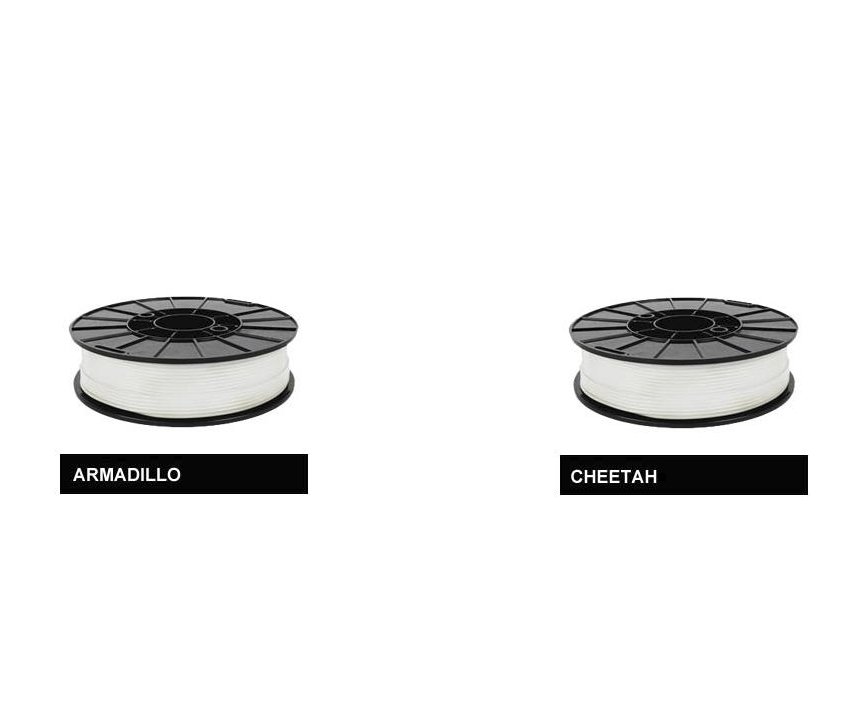
NinjaTek is most well known for their flexible filament, NinjaFlex, but two new products might change that notion.
The first new product is called “Cheetah”. It’s actually a flexible filament of sorts, but it addresses one of the major concerns with the original NinjaFlex.
While NinjaFlex is indeed very flexible and can print well in many circumstances, it does pose challenges to those with non-optimal 3D printing equipment. The very nature of the flexible filament makes it very much like a strand of spaghetti. Thus it is challenging for a powerful extruder to gently push it into a hot end for extrusion. If you go too fast, it will flex and bunch up instead of passing smoothly through the hot end and nozzle. To print NinjaFlex successfully, you often have to print relatively slowly. The results are good, but it just takes more time.
With Cheetah, it seems that NinjaTek has addressed these concerns. It’s a strong material that offers significant flex. In other words, it’s a bit stiffer, making it far easier to 3D print because your extruder can push it harder without fear of bunching up. It’s possible this filament could be used on a Bowden extruder-style 3D printer, where the filament would otherwise have many centimeters of opportunity to flex and bunch up.
Cheetah is available now in two formats, at a price of USD$68 for a 750g spool of 3.00mm filament or, we’re told, USD$55 for a 500g spool of 1.75mm filament when released in August. If you’re in need of a lot, they also sell a massive 2.2kg spool for USD$175 as a special order.
The second new filament from NinjaTek is “Armadillo”. It’s made from a rigid TPU-based plastic that they say is “like nylon without moisture concerns”. As such it is considered quite durable and not brittle at all. They explain:
Armadillo filament is a high performing rigid material, providing 90% higher abrasion resistance than nylon materials. Its toughness ratings are superior to commonly used materials, 86 times greater than that of ABS. It is an excellent material to use for bridging, with virtually no warping issues.
It also is chemically resistant to many oil-based products.
What’s interesting is that prints in a manner very similar to PLA, and the “build platform requires same prep as PLA”, so nothing special required – and you can likely print this on your current equipment without issue.
Armadillo is priced at USD$48 per 500g spool.
NinjaTek is very serious about these products for use in professional settings, as they have also published the results of ASTM testing. This should add some confidence to engineers seeking to build prototypes with low-cost 3D printers.
Via NinjaTek

